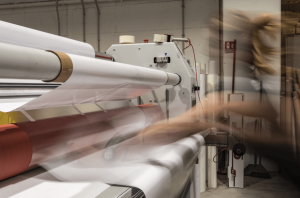When someone hears the word “lamination”, they are likely picturing a reference document with a plastic film to protect it. Often it can appear that laminate serves just one purpose. However, it can cover considerably more ground than most individuals realise. Laminating services are actually incredibly dynamic. A lot of the print we interact with everyday is laminated without us noticing.
You can use lamination as a subtle way of increasing the aesthetic and practical performance of items in numerous markets. Examples include speciality foods, pet products, print publications, and POS. Even the flexible packaging and prime labels so common on shelves in shops tend to benefit from it in some respect.
Unsupported films and thermal laminates are available in many materials. The same goes for textured finishes, and special effects. These are ones that can fully transform one bit of paper into a piece of art that amplifies the customer experience. It also signifies the quality of the object it accompanies.
Thermal laminates and unsupported films
 These two materials are similar in several ways. However, crucial distinctions exist in how and in what circumstances you apply them to a substrate. This can have an impact on laminating services.
These two materials are similar in several ways. However, crucial distinctions exist in how and in what circumstances you apply them to a substrate. This can have an impact on laminating services.
With thermal laminates, they are meant for laminators that utilise heated nip rollers. They come coated in an adhesive layer. It is one that melts when you heat it to guarantee the laminate obtains a strong bond with the substrate pressed against it.
Then there is unsupported films. They are engineered specifically for flexible packaging and prime label projects. These don’t have adhesive. Usually, this makes them more cost effective. Producers can decide how to apply the films using wet adhesives and current flexographic gear. All this is with minimal adjustments to the production.
Both unsupported films and thermal laminates come in an array of finishes and material types. A laminate’s base material influences everything from how efficiently it goes through a laminator to its durability. Multiple materials are available in all sorts of thicknesses. This helps dictate what applications the laminate is appropriate for. Finishes can range from basic matte and gloss to holographic effects and soft touch textures. Come to us if you need top tier laminating services.
Now we know more about the scope of lamination, so let’s examine a couple of reasons why it is good for customer-facing prints and packaging.
Lower costs
One of the ways laminates can help is by reducing expenses. It can seem like laminating films and lamination will only add to the project’s costs. But, the extra layer can supplement a piece in ways that let you save on production.
A major advantage is the films offer more durability and strength than cardstock or paper. As a result, they let printers use thinner paper. This is while guaranteeing that their product still feels good in the customer’s hands. It is one of the main benefits of laminating services.
In addition, there are specific burnish-resistant laminates. These negate the demand for shrink packaging or slip sheets. The film itself supplies protection in transit.
More money
Another benefit is that lamination can increase revenue. Laminates are compatible with many substrates, embellishments, and post-print processes. Thus, you can use them for almost any application. Laminate’s functionality is only limited by your imagination.
By introducing lamination into the products, it is possible to expand their reach. So, you can enter exciting new markets. You are able to position with brands that could otherwise be unreachable.
Markets saw lamination as a utilitarian step in the printing procedure to offer protection or add stiffness before. They now understand the possibilities. Laminated packages come with greater prices on the shelves. This is because they help to form a connection with end consumers drawn in by embellishments and creative designs. They can be cross market, giving brands an unforgettable, distinctive voice.
We understand laminating services
At Foiling Services, we aim to understand the qualities of the items our clients want laminating. This way, we can ensure we advise them about the right film to use to get the best results.
Our laminating services give clients a huge amount of choice. So, give us a call if you’re interested in working with us.
